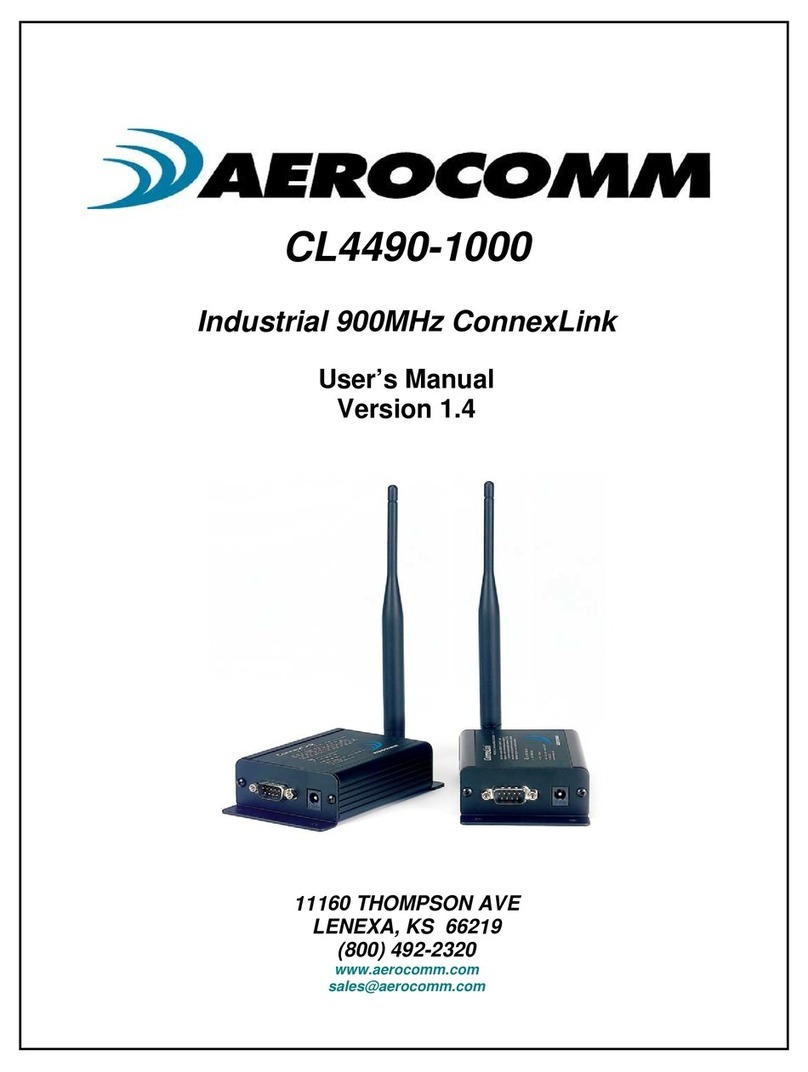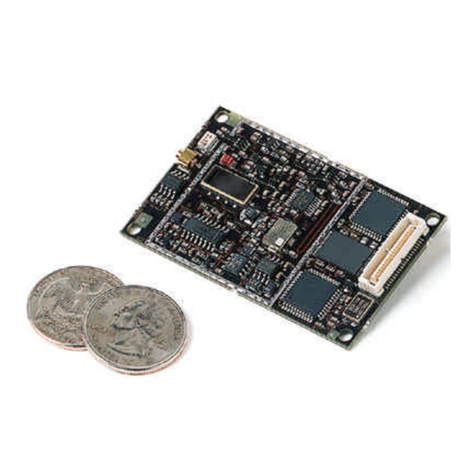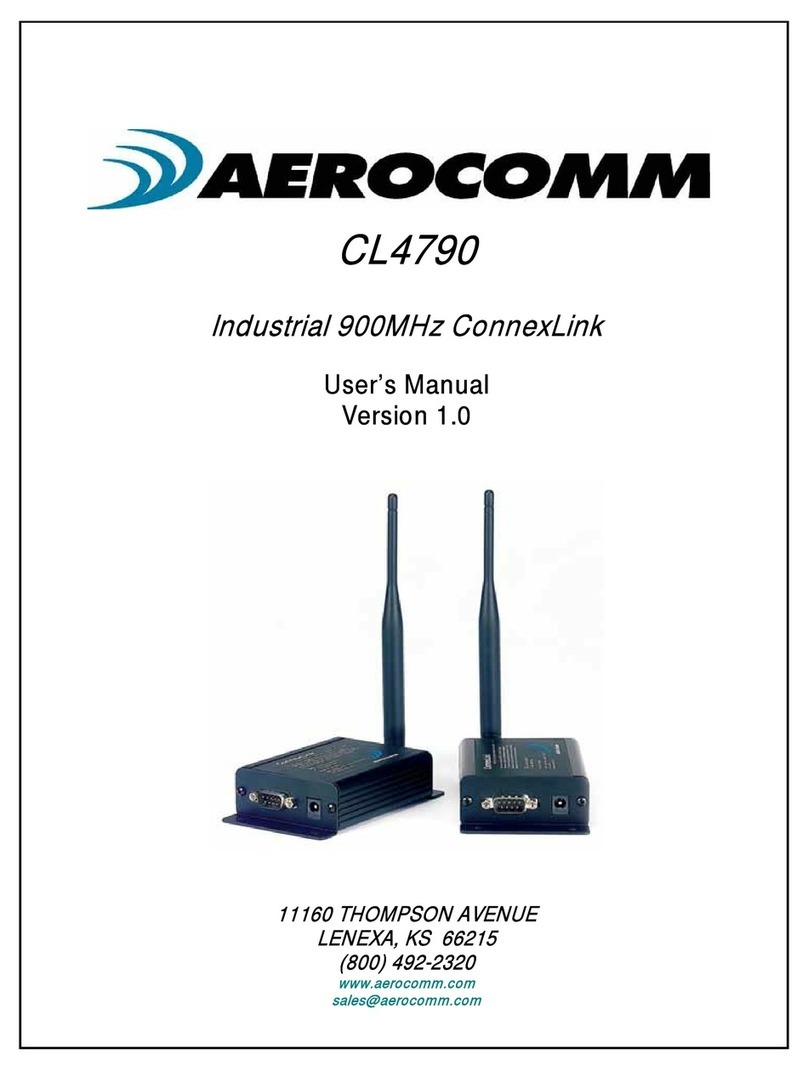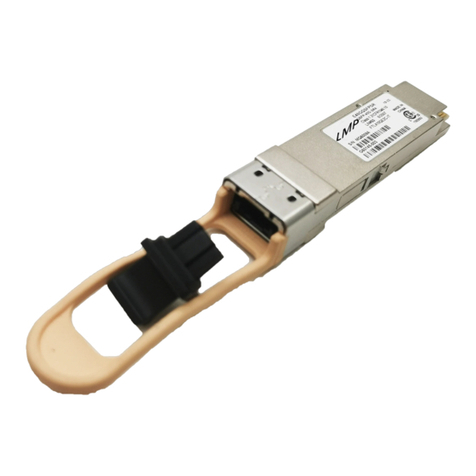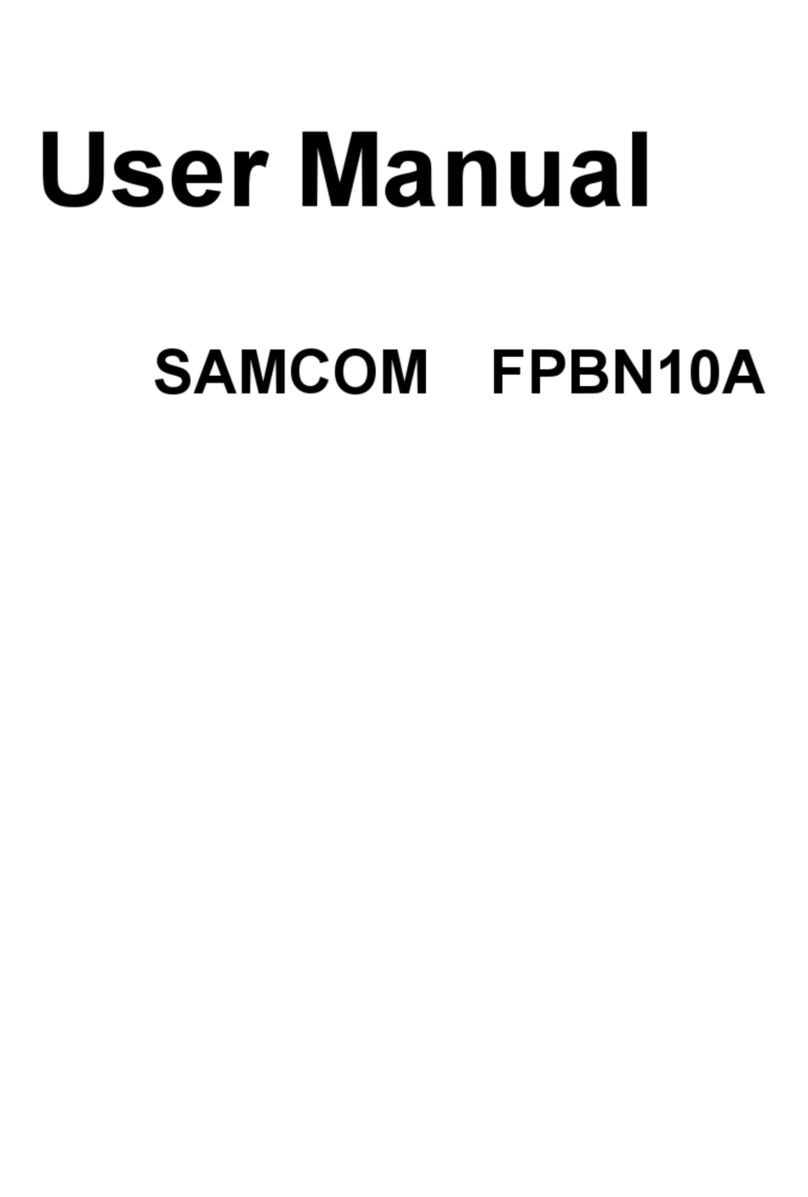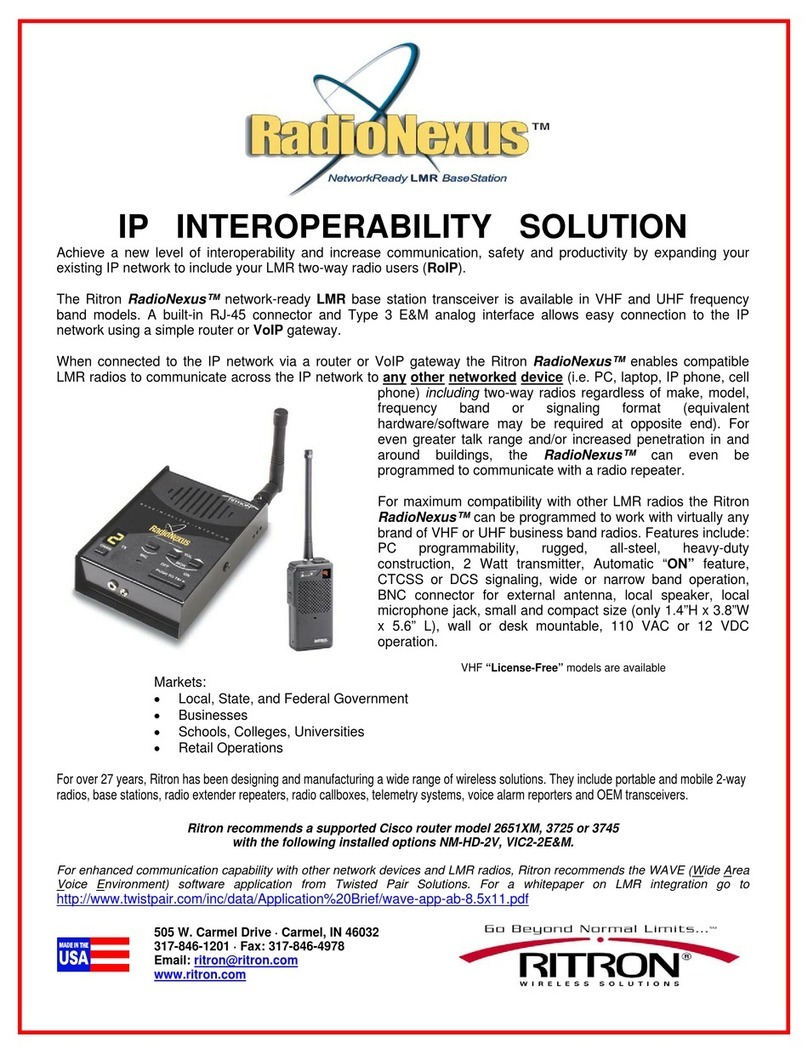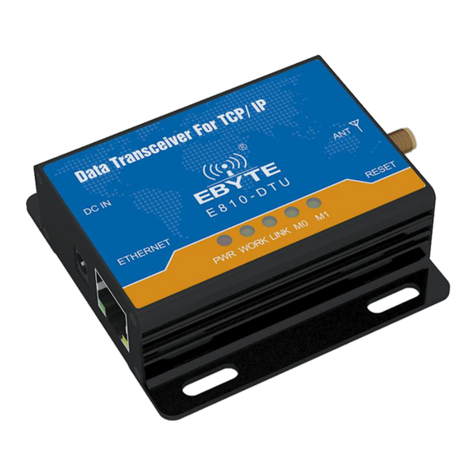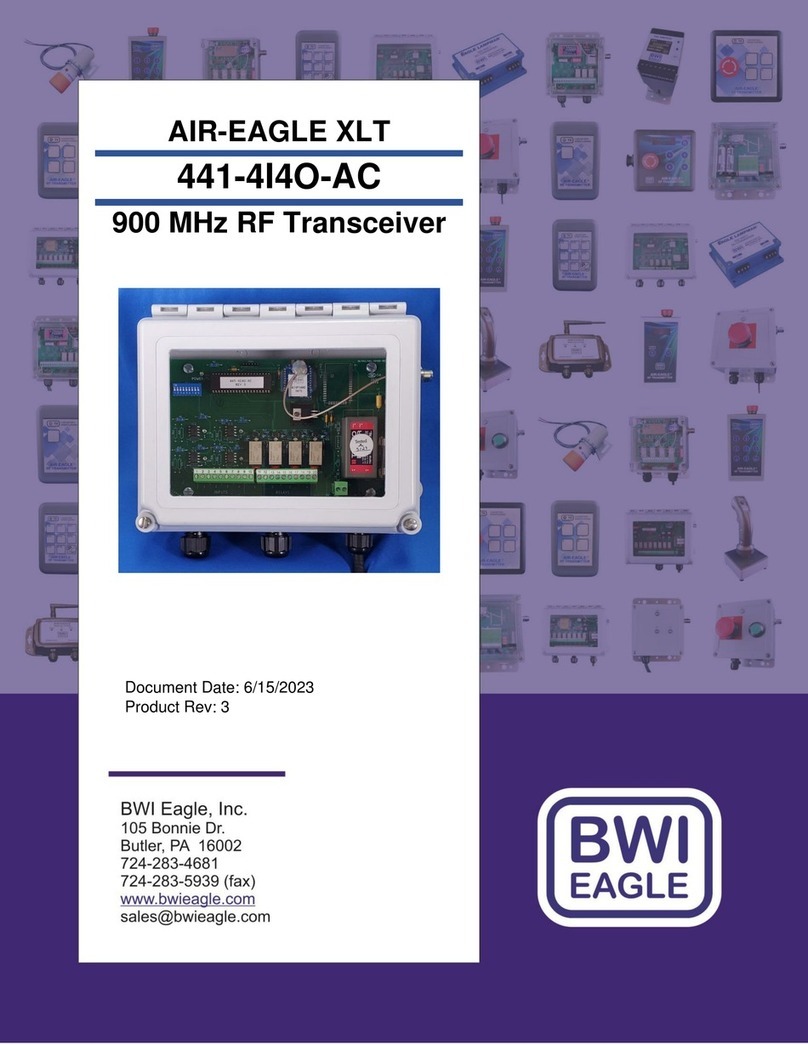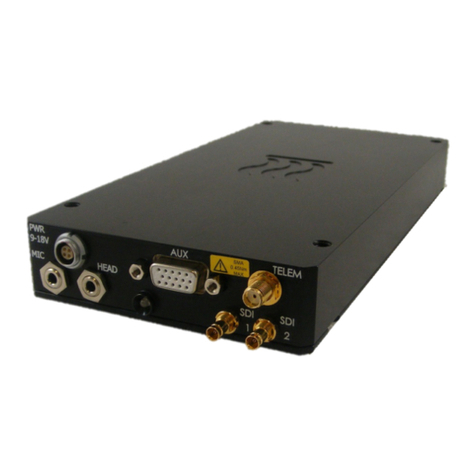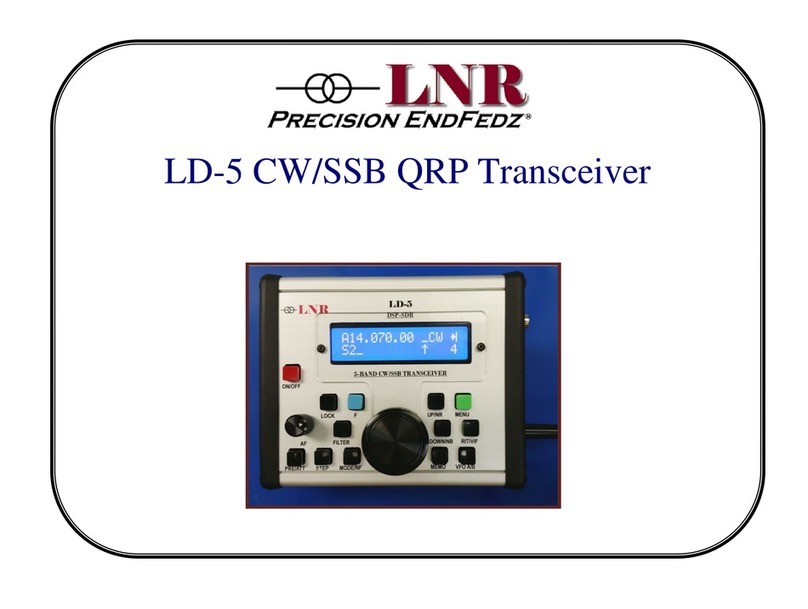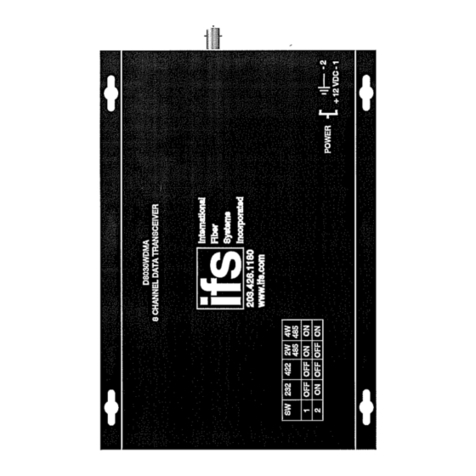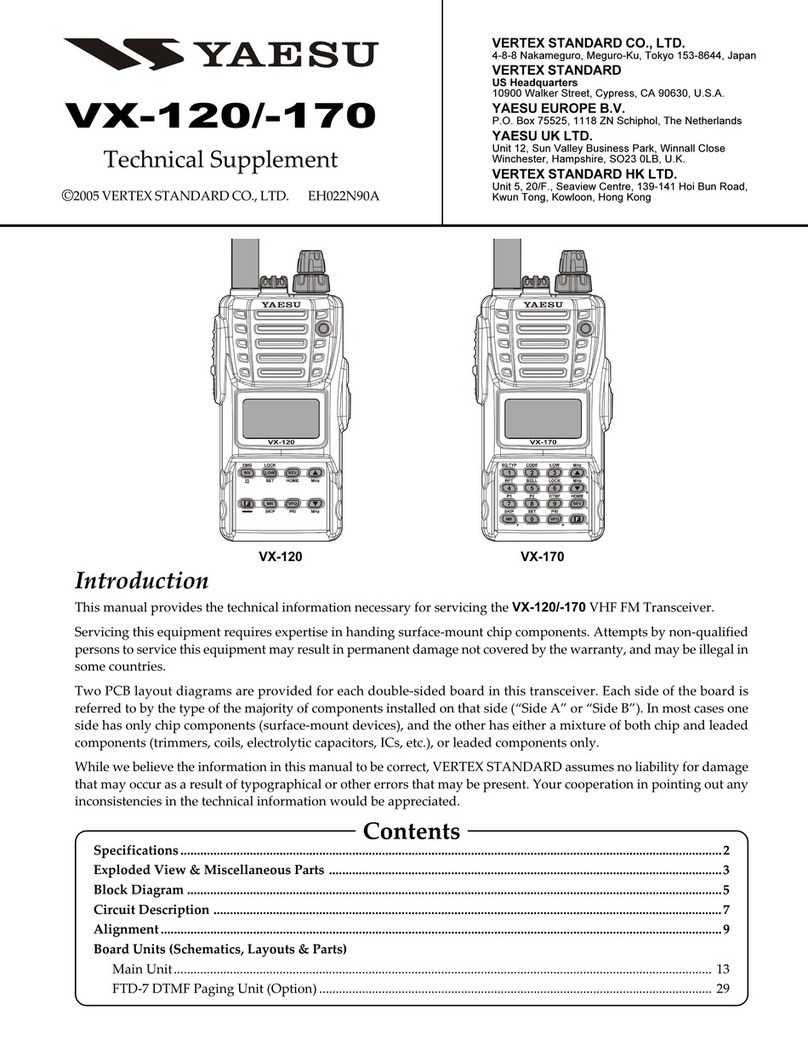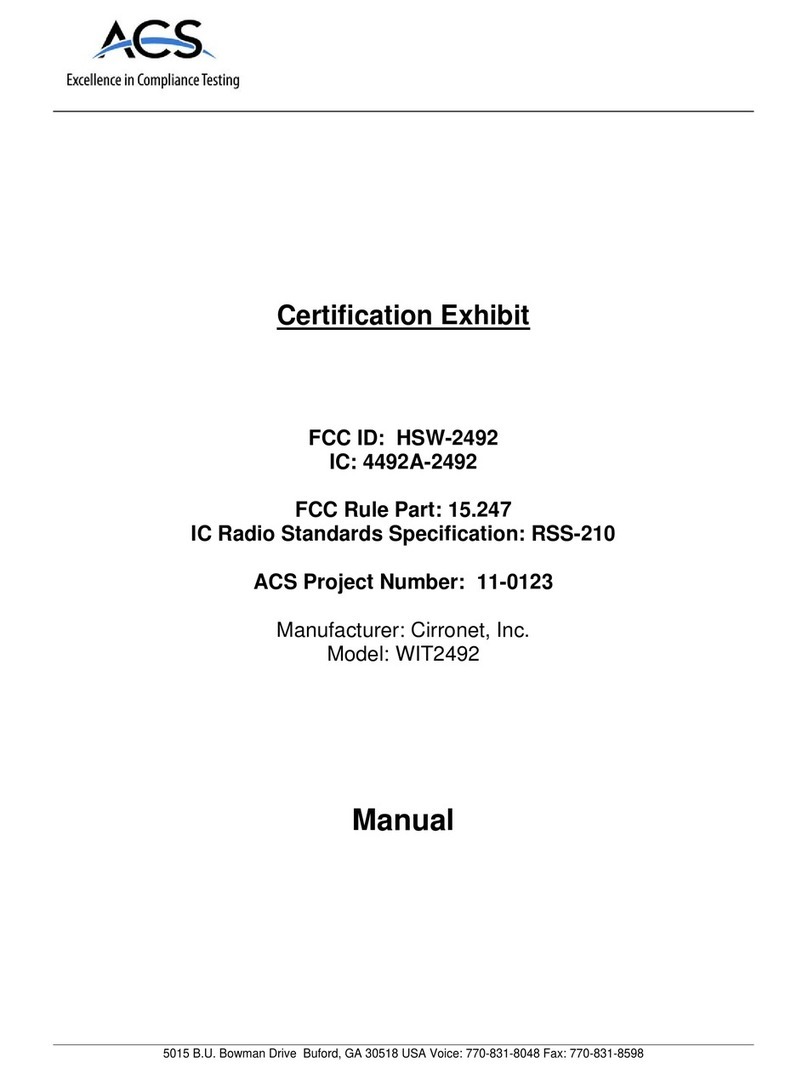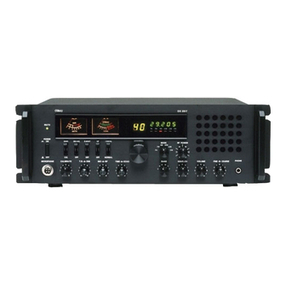AeroComm AC4424-10 User manual

AC4424
AC4424AC4424
AC4424
2.4 GHz OEM TRANSCEIVERS
2.4 GHz OEM TRANSCEIVERS2.4 GHz OEM TRANSCEIVERS
2.4 GHz OEM TRANSCEIVERS
Specifications Subject to Change
Specifications Subject to ChangeSpecifications Subject to Change
Specifications Subject to Change
User’s Manual
User’s ManualUser’s Manual
User’s Manual
Version 1.5
Version 1.5Version 1.5
Version 1.5
10981 EICHER DRIVE
10981 EICHER DRIVE10981 EICHER DRIVE
10981 EICHER DRIVE
LENEXA, KS 66219
LENEXA, KS 66219LENEXA, KS 66219
LENEXA, KS 66219
(800) 492
(800) 492(800) 492
(800) 492-
--
-2320
23202320
2320
www.aerocomm.com
www.aerocomm.comwww.aerocomm.com
www.aerocomm.com
wireless@a
wireless@awireless@a
wirele[email protected]om
erocomm.comerocomm.com
erocomm.com

12/09/02
12/09/0212/09/02
12/09/02
2
22
2
DOCUMENT INFORMATION
DOCUMENT INFORMATIONDOCUMENT INFORMATION
DOCUMENT INFORMATION
Copyright
CopyrightCopyright
Copyright
Information
InformationInformation
Information
Copyright © 2002
A
EROCOMM, Inc. All rights reserved.
The information contained in this manual and the accompanying
software programs are copyrighted and all rights are reserved by
AEROCOMM, Inc. AEROCOMM, Inc. reserves the right to make
periodic modifications of this product without obligation to notify
any person or entity of such revision. Copying, duplicating, selling, or otherwise
distributing any part of this product without the prior consent of an authorized
representative of AEROCOMM, Inc. is prohibited.
All brands and product names in this publication are registered
trademarks or trademarks of their respective holders.
This material is preliminary
This material is preliminaryThis material is preliminary
This material is preliminary
Information furnished by AEROCOMM in this specification is believed to be accurate. Devices sold
by AEROCOMM are covered by the warranty and patent indemnification provisions appearing in its
Terms of Sale only. AEROCOMM makes no warranty, express, statutory, and implied or by
description, regarding the information set forth herein. AEROCOMM reserves the right to change
specifications at any time and without notice.
AEROCOMM’s products are intended for use in normal commercial and industrial applications.
Applications requiring unusual environmental requirements such as military, medical life-support
or life-sustaining equipment are specifically not recommended without additional testing for such
application.

12/09/02
12/09/0212/09/02
12/09/02
3
33
3
DOCUMENT INFORMATION
DOCUMENT INFORMATIONDOCUMENT INFORMATION
DOCUMENT INFORMATION
Revision
RevisionRevision
Revision
Description
DescriptionDescription
Description
Version 1.0 11/7/2001 – Initial Release Version
Version 1.1
Version 1.2
Version 1.3
10/14/2002 – Not Released
10/18/2002 – Full release of AC4424 specification
11/19/2002 – Made Full-Duplex incompatible with Stream Mode
Version 1.4
Version 1.5 12/09/2002 – Changed Sub Hop Adjust setting recommendations
1/30/2003 – Removed all references to Commercial and Industrial temperature. All
products are now Industrial temperature. ChangedSection 4.2.1 EEPROM Byte Read
4.2.1 EEPROM Byte Read4.2.1 EEPROM Byte Read
4.2.1 EEPROM Byte Read to
allow multiple byte reads.

12/09/02
12/09/0212/09/02
12/09/02
4
44
4
FCC INFORMATION
FCC INFORMATIONFCC INFORMATION
FCC INFORMATION
Agency App
Agency AppAgency App
Agency Approval Overview
roval Overviewroval Overview
roval Overview
Part Number
Part NumberPart Number
Part Number
US/FCC
US/FCCUS/FCC
US/FCC
CAN/IC
CAN/ICCAN/IC
CAN/IC
EUR/EN
EUR/ENEUR/EN
EUR/EN
Portable
PortablePortable
Portable
Mobile
MobileMobile
Mobile
Fixed
FixedFixed
Fixed
AC4424-10 X X X X X X
AC4424-100 X X X X-32cm* X-32cm*
AC4424-200 X X X-32cm* X-32cm*
* See RF Exposure warning on next page
Note: The product approvals above are with antennas specified below.
Agency Identification Numbers
Agency Identification NumbersAgency Identification Numbers
Agency Identification Numbers
Part Number
Part NumberPart Number
Part Number
US/FCC
US/FCCUS/FCC
US/FCC
CAN/IC
CAN/ICCAN/IC
CAN/IC
EUR/EN
EUR/ENEUR/EN
EUR/EN
AC4424-10 KQL-PKLR2400 CAN2268391158A X
AC4424-100 X X X
AC4424-200 KQL-PKLR2400-200 CAN2268391180A
WARNING:
WARNING:WARNING:
WARNING:
This device complies with Part 15 of the FCC Rules. Operation is subject to the
following two conditions: (1) This device may not cause harmful interference,
and (2) This device must accept any interference received, including
interference that may cause undesired operation.
WARNING:
WARNING:WARNING:
WARNING:
This device has been tested with an MMCX connector with the antennas listed
below. When integrated in the OEMs product, these fixed antennas require
installation preventing end-users from replacing them with non-approved
antennas. Any antenna not in the following table must be tested to comply with
FCC Section 15.203 for unique antenna connectors and Section 15.247 for
emissions.
WARNING:
WARNING:WARNING:
WARNING:
The Original Equipment Manufacturer (OEM) must ensure that FCC labeling
requirements are met. This includes a clearly visible label on the outside of the
OEM enclosure specifying the appropriate AeroComm FCC identifier for this
product as well as the FCC Notice above. The FCC identifiers are listed above
in the Agency Identifier Numbers section.
FCC Notice
FCC NoticeFCC Notice
FCC Notice
Labeling Requirements
Labeling RequirementsLabeling Requirements
Labeling Requirements
Antenna Warning
Antenna WarningAntenna Warning
Antenna Warning
Caution: Any changes or modifications not expressly approved by the party responsible for
compliance could void the user's authority to operate the equipment.

12/09/02
12/09/0212/09/02
12/09/02
5
55
5
FCC INFORMATION
FCC INFORMATIONFCC INFORMATION
FCC INFORMATION
Approved Antenna List
Approved Antenna ListApproved Antenna List
Approved Antenna List
Item
ItemItem
Item
Part Number
Part NumberPart Number
Part Number
Mfg.
Mfg.Mfg.
Mfg.
Type
TypeType
Type
Gain
GainGain
Gain
(dBi)
(dBi)(dBi)
(dBi)
AC4424X
AC4424X
AC4424X
AC4424X-
-
-
-10
10
10
10
AC4424X
AC4424X
AC4424X
AC4424X-
-
-
-100
100
100
100
AC4424X
AC4424X
AC4424X
AC4424X-
-
-
-200
200
200
200
1 S131CL-5-RMM-2450S Nearson 1/4 Wave Dipole2 MFMF
2 S191FL-5-RMM-2450S Nearson 5/8 Wave Dipole3 PMF MFMF
P=Portable, M=Mobile, F=Fixed/Basestation
P=Portable, M=Mobile, F=Fixed/BasestationP=Portable, M=Mobile, F=Fixed/Basestation
P=Portable, M=Mobile, F=Fixed/Basestation

12/09/02
12/09/0212/09/02
12/09/02
6
66
6
FCC INFORMATION
FCC INFORMATIONFCC INFORMATION
FCC INFORMATION
RF Exposure AC4424
RF Exposure AC4424RF Exposure AC4424
RF Exposure AC4424-
--
-10
1010
10
RF Exposure AC4424
RF Exposure AC4424RF Exposure AC4424
RF Exposure AC4424-
--
-100
100100
100
RF Exposure AC4424
RF Exposure AC4424RF Exposure AC4424
RF Exposure AC4424-
--
-200
200200
200
WARNING:
WARNING:WARNING:
WARNING:
To comply with FCC RF Exposure requirements, the Original Equipment
Manufacturer (OEM) must ensure that Antennas 3, 4, 5, 6 and 7 in the previous
table must be installed and/or configured to operate with a separation distance
of 20cm or more from all persons to satisfy RF Exposure compliance.
The preceding statement must be included as a CAUTION statement in
manuals for products operating with Antennas 3, 4, 5, 6 and 7 in the previous
table to alert users on FCC RF Exposure compliance.
WARNING:
WARNING:WARNING:
WARNING:
To satisfy FCC RF exposure requirements for mobile and base station
transmitting devices, a separation distance of 32cm or more should be
maintained between the antenna of this device and persons during operation.
To ensure compliance, operations at closer than this distance is not
recommended.
The preceding statement must be included as a CAUTION statement in
manuals for OEM products to alert users on FCC RF Exposure compliance.
WARNING:
WARNING:WARNING:
WARNING:
To satisfy FCC RF exposure requirements for mobile and base station
transmitting devices, a separation distanceof 20cm or moreshould be
maintained between the antenna of this device and persons during operation.
To ensure compliance, operations at closer than this distance is not
recommended.
The preceding statement must be included as a CAUTION statement in
manuals for OEM products to alert users on FCC RF Exposure compliance.

12/09/02
12/09/0212/09/02
12/09/02
7
77
7
TABLE OF CONTENTS
TABLE OF CONTENTSTABLE OF CONTENTS
TABLE OF CONTENTS
1.
1.1.
1. OVERVIEW
OVERVIEWOVERVIEW
OVERVIEW................................
................................................................
................................................................
................................................................
................................................................
................................................................
........................................................
................................................
........................9
99
9
2.
2.2.
2. AC4424 SPECIFICATION
AC4424 SPECIFICATIONAC4424 SPECIFICATION
AC4424 SPECIFICATIONS
SS
S................................
................................................................
................................................................
................................................................
..............................................................
............................................................
..............................10
1010
10
3.
3.3.
3. SPECIFICATIONS
SPECIFICATIONSSPECIFICATIONS
SPECIFICATIONS ................................
................................................................
................................................................
................................................................
................................................................
................................................................
...........................................
......................
...........11
1111
11
3.1 INTERFACE SIGNAL DEFINITIONS.............................................................................................. 11
3.2 ELECTRICAL SPECIFICATIONS .................................................................................................. 12
3.3 SYSTEM TIMING...................................................................................................................... 12
3.3.1
Serial Interface Data Rate ............................................................................................ 12
3.3.2
Latency Times.............................................................................................................. 12
3.3.3
Maximum Overall System Throughput........................................................................ 12
4.
4.4.
4. CONFIGURING THE AC44
CONFIGURING THE AC44CONFIGURING THE AC44
CONFIGURING THE AC4424
2424
24 ................................
................................................................
................................................................
................................................................
..........................................................
....................................................
..........................14
1414
14
4.1 EEPROM PARAMETERS......................................................................................................... 14
4.2 EEPROM CONFIGURATION COMMANDS.................................................................................. 15
4.2.1
EEPROM Byte Read .................................................................................................... 16
4.2.2
EEPROM Byte Write..................................................................................................... 16
4.2.3
EEPROM Exit Configuration Command ...................................................................... 16
4.3 ON-THE-FLY CONTROL COMMAND REFERENCE......................................................................... 17
4.3.1
Status Request............................................................................................................. 17
4.3.2
Change Channel with Forced Acquisition Sync.......................................................... 17
4.3.3
Server/Client Command .............................................................................................. 18
4.3.4
Power-Down Command .............................................................................................. 18
4.3.5
Power-Down Wake-Up Command............................................................................... 19
4.3.6
Broadcast Mode .......................................................................................................... 19
4.3.7
Read Static Bank #1 Byte ........................................................................................... 19
4.3.8
Write Static Bank #1 Bytes.......................................................................................... 20
4.3.9
Read Static Bank #2 Bytes.......................................................................................... 20
4.3.10
Write Static Bank #2 Bytes.......................................................................................... 21
4.3.11
Write Destination Address ........................................................................................... 21
4.3.12
Read Destination Address........................................................................................... 21
4.3.13
Temperature Update.................................................................................................... 22
5.
5.5.
5. THEORY OF OPERATION
THEORY OF OPERATIONTHEORY OF OPERATION
THEORY OF OPERATION ................................
................................................................
................................................................
................................................................
...............................................................
..............................................................
...............................23
2323
23
5.1 HARDWARE INTERFACE ........................................................................................................... 23
5.1.1
TXD (Transmit Data) and RXD (Receive Data) (pins 2 and 3 respectively)................. 23
5.1.2
Hop Frame (pin 6)........................................................................................................ 23
5.1.3
CTS Handshaking (pin 7) ............................................................................................ 23
5.1.4
RTS Handshaking (pin 8)............................................................................................. 23
5.1.5
9600 Baud/Packet Frame (pin 12)............................................................................... 24
5.1.6
RSSI (pin 13)................................................................................................................ 24
5.1.7
Wr_Ena (EEPROM Write Enable) (pin 14)................................................................... 25
5.1.8
UP_Reset (pin 15)........................................................................................................ 25
5.1.9
Command/Data (pin 17).............................................................................................. 25
5.1.10
In Range (pin 20)......................................................................................................... 25
5.2 SOFTWARE PARAMETERS........................................................................................................ 25
5.2.1
RF Architecture (Server-Client/Peer-to-Peer)............................................................... 25
5.2.2
RF Mode ...................................................................................................................... 26
5.2.3
Sub Hop Adjust............................................................................................................ 27
5.2.4
Duplex Mode................................................................................................................ 27

12/09/02
12/09/0212/09/02
12/09/02
8
88
8
5.2.5
Interface Timeout/RF Packet Size................................................................................ 27
5.2.6
Serial Interface Baud Rate........................................................................................... 28
5.2.7
Network Topology ....................................................................................................... 28
5.2.8
Auto Config.................................................................................................................. 29
6.
6.6.
6. APPLICA
APPLICAAPPLICA
APPLICATION EXAMPLES
TION EXAMPLESTION EXAMPLES
TION EXAMPLES ................................
................................................................
................................................................
................................................................
..............................................................
............................................................
..............................30
3030
30
7.
7.7.
7. DIMENSIONS
DIMENSIONSDIMENSIONS
DIMENSIONS................................
................................................................
................................................................
................................................................
................................................................
................................................................
..................................................
....................................
..................31
3131
31
8.
8.8.
8. ORDERING INFORMATION
ORDERING INFORMATIONORDERING INFORMATION
ORDERING INFORMATION................................
................................................................
................................................................
................................................................
.............................................................
..........................................................
.............................32
3232
32
8.1 PRODUCT PART NUMBERS ...................................................................................................... 32
8.2 DEVELOPER KIT PART NUMBERS.............................................................................................. 32
Figures
FiguresFigures
Figures
Figure 1 – RSSI Voltage vs. Received Signal Strength..................................................................24
Figure 2 – AC4424 with MMCX......................................................................................................31
Tables
TablesTables
Tables
Table 1 – Pin Definitions.................................................................................................................11
Table 2 – DC Input Voltage Characteristics...................................................................................12
Table 3 – DC Output Voltage Characteristics................................................................................12
Table 4 – Maximum Overall System Throughputs.........................................................................13
Table 5 – EEPROM Parameters.....................................................................................................14
Table 6 – Static Memory Address Map..........................................................................................17
Table 7 – Sub Hop Adjust Settings................................................................................................27
Table 8 – Baud Rate.......................................................................................................................28
Table 9 – US and International RF Channel Number Settings ......................................................29
Table 10 – Auto Config Parameters...............................................................................................29

AC4424 Specifications
AC4424 SpecificationsAC4424 Specifications
AC4424 Specifications
12/09/02
12/09/0212/09/02
12/09/02
9
99
9
AC4424 Features
AC4424 FeaturesAC4424 Features
AC4424 Features
Simple 5V TTL level serial interface for fast integration
Frequency Hopping Spread Spectrum for security and interference rejection
Cost Efficient for high volume applications
Low power consumption for battery powered implementations
Small size for portable and enclosed applications
Very Low latency and high throughput
Industrial temperature (-40°C to 80°C)
1.
1.1.
1.
Overview
OverviewOverview
Overview
The AC4424 is a member of AeroComm’s ConnexRF OEM transceiver family. It is designed for
integration into OEM systems operating under FCC part 15.247 regulations for the 2.4 GHz ISM band.
The AC4424 is a cost-effective, High performance, 2.4 GHz frequency hopping spread spectrum
transceiver. It provides an asynchronous TTL level serial interface for OEM Host communications.
Communications include both system and configuration data. The Host supplies system data for
transmission to other Host(s). Configuration data is stored in an on-board EEPROM. All frequency
hopping, synchronization, and RF system data transmission/reception is performed by the transceiver.
The AC4424 transceivers can be used as a direct serial cable replacement – requiring no special Host
software for operation. They also feature a number of On-the-Fly Control Commands providing the
OEM Host with a very versatile interface for any situation.
AC4424 transceivers operate in a Point-to-Point or Point-to-Multipoint, Client-Server or Peer-to-Peer
architecture. One transceiver is configured as a Server and there can be one or many Clients. To
establish synchronization between transceivers, the Server emits a beacon. Upon detecting a beacon,
a Client transceiver informs its Host and a RF link is established.
There are two data rates the OEM should be aware of:
•Serial Interface Data Rate – All transceivers can be configured to common PC serial port
baud rates from 110 bps to 288,000 bps.
•Effective Data Transmission Rate – The AC4424 is a highly efficient, low-latency
transceiver.
This document contains information about the hardware and software interface between an
AeroComm AC4424 transceiver and an OEM Host. Information includes the theory of operation,
specifications, interface definition, configuration information and mechanical drawing.
The OEM is responsible for ensuring the final product meets all FCC and/or appropriate regulatory
agency requirements listed herein before selling any product.

AC4424 Specifications
AC4424 SpecificationsAC4424 Specifications
AC4424 Specifications
12/09/02
12/09/0212/09/02
12/09/02
10
1010
10
2.
2.2.
2.
AC4424 Specification
AC4424 SpecificationAC4424 Specification
AC4424 Specifications
ss
s
GENERAL
GENERALGENERAL
GENERAL
Interface 20 pin mini-connector
Serial Interface Data Rate PC baud rates from 110 bps to 288,000 bps
Power Consumption (typical)
Duty Cycle (TX=Transmit; RX=Receive)
Duty Cycle (TX=Transmit; RX=Receive)Duty Cycle (TX=Transmit; RX=Receive)
Duty Cycle (TX=Transmit; RX=Receive)
10%TX
10%TX10%TX
10%TX
50%TX
50%TX50%TX
50%TX
100%TX
100%TX100%TX
100%TX
100%RX
100%RX100%RX
100%RX
Pwr
PwrPwr
Pwr-
--
-Down
DownDown
Down
AC4424-10: 90mA 115mA 140mA 85mA 15mA
AC4424-100: 100mA 160mA 235mA 85mA 15mA
AC4424-200: 115mA 235mA 385mA 85mA 15mA
Channels (used to create independent networks) 4 channel sets consisting of 16 channels each
Security One byte System ID
RADIO
RADIORADIO
RADIO
Frequency Band US/Canada: 2.402 – 2.478 GHz
France: 2.448 – 2.457 GHz
Radio Type Frequency Hopping Spread Spectrum
Output Power (conducted, no antenna) AC4424-10, 10mW typical
AC4424-100, 50mW typical
AC4424-200, 200mW typical
Effective Isotropic Radiated Power (EIRP with
3dBi gain antenna) AC4424-10, 20mW typical
AC4424-100, 100mW typical
AC4424-200, 400mW typical
Voltage 5V nominal ±2%, ±50mV ripple
Sensitivity -90dBm typical
Range (based on 3dBi gain antenna)
AC4424-10, Indoors to 300 ft., Outdoors to 3000 ft.
AC4424-100, Indoors to 400 ft., Outdoors to 6000 ft.
AC4424-200, Indoors to 500 ft., Outdoors to 10000 ft.
ENVIRONMENTAL
ENVIRONMENTALENVIRONMENTAL
ENVIRONMENTAL
Temperature (Operating) Industrial: AC4424: -40°C to 80°C
Temperature (Storage) -50°C to +85°C
Humidity (non-condensing) 10% to 90%
PHYSICAL
PHYSICALPHYSICAL
PHYSICAL
Dimensions 1.65” x 2.65” x 0.20”
Antenna AC4424-10, MMCX Jack
AC4424-100, MMCX Jack
AC4424-200, MMCX Jack
Weight Less than 0.75 ounce

AC4424 Specifications
AC4424 SpecificationsAC4424 Specifications
AC4424 Specifications
12/09/02
12/09/0212/09/02
12/09/02
11
1111
11
3.
3.3.
3.
Specifications
SpecificationsSpecifications
Specifications
3.1
3.13.1
3.1
I
IIINTERFACE
NTERFACENTERFACE
NTERFACE S
SS
SIGNAL
IGNALIGNAL
IGNAL D
DD
DEFINITIONS
EFINITIONSEFINITIONS
EFINITIONS
The AC4424 has a simple interface that allows OEM Host communications with the transceiver. Table 1
Table 1Table 1
Table 1
–
––
– Pin Definitions
Pin DefinitionsPin Definitions
Pin Definitions, shows the connector pin numbers and associated functions. The I/O direction is with
regard to the transceiver. All I/O is 5VDC TTL level signals except for RSSI. All inputs are weakly pulled
High and may be left floating during normal operation.
Table
TableTable
Table 1
11
1
–
––
–
Pin Definitions
Pin DefinitionsPin Definitions
Pin Definitions
Pin
PinPin
Pin
Type
TypeType
Type
Signal Name
Signal NameSignal Name
Signal Name
Function
FunctionFunction
Function
1 NC No Connect
2 O TXD Transmitted data out of thetransceiver
3 I RXD Data input tothe transceiver
4 NC No Connect
5 GND GND Signal Ground
6 O Hop Frame HOP FRAME – Active Low when the transceiver is hopping.
7 O CTS Clear to Send – ActiveLow when the transceiver is ready to accept data for transmission.
8 I RTS Request to Send – When enabled in EEPROM, active Low when the OEM Host is ready to
accept data from the transceiver. NOTE: Keeping RTS High for too long can cause data loss.
9 NC No Connect
10 PWR VCC 5V ± 2%, ± 50mV ripple
11 PWR VCC 5V ± 2%, ±50 mV ripple
12 I/O 9600_BAUD/
Packet Frame 9600_BAUD – When pulled logic Low before applying power or resetting the transceiver’s
serial interface is forced to a 9600, 8, N, 1 rate. To exit, transceiver must be reset or power-
cycled with 9600_Baud logic High.
Packet Frame – When programmed in EEPROM, Packet Frame will transition logic Low at the
start of a received RF packet and transition logicHigh at the completion of thepacket.
13 O RSSI Received Signal Strength - An analog output giving a relative indication of received signal
strength while in Receive Mode
14 I WR_ENA EEPROM Write Enable – When pulled logic Low, it allows the Host to write the on-board
EEPROM. Resetting the transceiver with this pin pulledLow may corrupt EEPROM data.
15 I UP_RESET RESET – Controlled by the AC4424 for power-on reset if left unconnected. After a Stable
power-on (50ms) a 50us logic High pulse will reset the AC4424. Do not power-up the
transceiver with this pin tiedLow.
16 GND GND Signal Ground
17 I Command/Data When logic Low, transceiver interprets Host data as command data. When logic High,
transceiver interprets Host data as transmit data.
18 NC No Connect
19 NC No Connect
20 O IN_RANGE In Range – Active Low when a Client radio is in range of a Server on same Channel with the same
System ID.
I = Input to the transceiver O = Output from the transceiver

AC4424 Specifications
AC4424 SpecificationsAC4424 Specifications
AC4424 Specifications
12/09/02
12/09/0212/09/02
12/09/02
12
1212
12
3.2
3.23.2
3.2
E
EE
ELECTRICAL
LECTRICALLECTRICAL
LECTRICAL S
SS
SPECIFICATIONS
PECIFICATIONSPECIFICATIONS
PECIFICATIONS
Table
TableTable
Table 2
22
2
–
––
– DC Input Voltage Characteristics
DC Input Voltage CharacteristicsDC Input Voltage Characteristics
DC Input Voltage Characteristics
Pin
PinPin
Pin
Type
TypeType
Type
Name
NameName
Name
High Min.
High Min.High Min.
High Min.
High Max.
High Max.High Max.
High Max.
Low Min.
Low Min.Low Min.
Low Min.
Low Max.
Low Max.Low Max.
Low Max.
Unit
UnitUnit
Unit
3 I RXD 0.2Vcc+0.9 Vcc+0.5 -0.5 0.2Vcc-0.1 V
8 I RTS 0.2Vcc+0.9 Vcc+0.5 -0.5 0.2Vcc-0.1 V
12 I 9600_Baud 0.2Vcc+0.9 Vcc+0.5 -0.5 0.2Vcc-0.1 V
14 I WR_ENA 0.7Vcc Vcc+1 -0.3 0.5 V
15 I UP_RESET 0.7Vcc Vcc+0.5 -0.5 0.2Vcc-0.1 V
17 I Command/Data 0.2Vcc+0.9 Vcc+0.5 -0.5 0.2Vcc-0.1 V
Table
TableTable
Table 3
33
3
–
––
– DC Output Vo
DC Output VoDC Output Vo
DC Output Voltage Characteristics
ltage Characteristicsltage Characteristics
ltage Characteristics
Pin
PinPin
Pin
Type
TypeType
Type
Name
NameName
Name
High Min.
High Min.High Min.
High Min.
Low Max.
Low Max.Low Max.
Low Max.
Unit
UnitUnit
Unit
2 O TXD Vcc-0.7 @ -30µA 0.4 @ 1.6mA V
6 O Hop Frame Vcc-0.7 @ -30µA 0.4 @ 1.6mA V
7 O CTS Vcc-0.7 @ -30µA 0.4 @ 1.6mA V
12 O Packet Frame Vcc-0.7 @ -30µA 0.4 @ 1.6mA V
13 O RSSI See Figure 1 See Figure 1 V
20 O IN_RANGE Vcc-0.7 @ -30µA 0.4 @ 1.6mA V
3.3
3.33.3
3.3
S
SS
SYSTEM
YSTEMYSTEM
YSTEM T
TT
TIMING
IMINGIMING
IMING
Care should be taken when selecting transceiver architecture as it can have serious effects on data
rates, latency timings, and Overall System Throughput. The importance of these three characteristics
will vary from system to system and should be a strong consideration when designing the system.
3.3.1
3.3.13.3.1
3.3.1
Serial Interface Data Rate
Serial Interface Data RateSerial Interface Data Rate
Serial Interface Data Rate
The Serial Interface Data Rate is programmable by the Host. This is the rate the Host and transceiver
communicate over the serial bus. Possible values range from 110 bps to 288,000 bps. The only
supported mode is asynchronous – 8-bit, No Parity, 1 Start Bit, and 1 Stop Bit.
..
.
3.3.2
3.3.23.3.2
3.3.2
Latency Times
Latency TimesLatency Times
Latency Times
TBD
3.3.3
3.3.33.3.3
3.3.3
Maximum Overall System Throughput
Maximum Overall System ThroughputMaximum Overall System Throughput
Maximum Overall System Throughput
When configured as shown in the table below, an AC4424 transceiver is capable
capablecapable
capable of achieving the listed
throughput. However, in the presence of interference or at longer ranges, the transceiver may not be
able to meet these specified throughputs. Note: Higher overall system throughputs are po
Note: Higher overall system throughputs are poNote: Higher overall system throughputs are po
Note: Higher overall system throughputs are possible.
ssible.ssible.
ssible.
Contact technical support for details.
Contact technical support for details.Contact technical support for details.
Contact technical support for details.

AC4424 Specifications
AC4424 SpecificationsAC4424 Specifications
AC4424 Specifications
12/09/02
12/09/0212/09/02
12/09/02
13
1313
13
Table
TableTable
Table 4
44
4
–
––
– Maximum Overall System Throughputs
Maximum Overall System ThroughputsMaximum Overall System Throughputs
Maximum Overall System Throughputs
RF Mode Interface Baud
Rate Duplex FEC Direction Throughput
(bps)
Stream 192k Half Disabled One way 192k
Stream 192k Half Enabled One way 64k
Acknowledge 115,200 Half Disabled One way 80k
Acknowledge 115,200 Full Disabled Both ways 40k

AC4424 Specifications
AC4424 SpecificationsAC4424 Specifications
AC4424 Specifications
12/09/02
12/09/0212/09/02
12/09/02
14
1414
14
4.
4.4.
4.
Configuring the AC4424
Configuring the AC4424Configuring the AC4424
Configuring the AC4424
4.1
4.14.1
4.1
EEPROM P
EEPROM PEEPROM P
EEPROM PARAMETERS
ARAMETERSARAMETERS
ARAMETERS
A Host can program various parameters that are stored in EEPROM and become active after a power-
on reset. T
TT
Table 5
able 5able 5
able 5 -
--
- EEPROM Parameters
EEPROM ParametersEEPROM Parameters
EEPROM Parameters, gives the locations and descriptions of the parameters that
can be read or written by a Host. Factory default values are also shown.
Do not write to any EEPROM
Do not write to any EEPROMDo not write to any EEPROM
Do not write to any EEPROM
addresses other than those listed below. Do not copy a transceive
addresses other than those listed below. Do not copy a transceiveaddresses other than those listed below. Do not copy a transceive
addresses other than those listed below. Do not copy a transceiver’s EEPROM data to another
r’s EEPROM data to anotherr’s EEPROM data to another
r’s EEPROM data to another
transceiver. Doing so may cause the transceiver to malfunction.
transceiver. Doing so may cause the transceiver to malfunction.transceiver. Doing so may cause the transceiver to malfunction.
transceiver. Doing so may cause the transceiver to malfunction.
Table
TableTable
Table 5
55
5
–
––
– EEPROM Parameters
EEPROM ParametersEEPROM Parameters
EEPROM Parameters
Parameter
ParameterParameter
Parameter
EEPROM
EEPROMEEPROM
EEPROM
Address
AddressAddress
Address
Length
Len
g
thLen
g
th
Length
(Bytes)
(Bytes)(Bytes)
(Bytes)
Range
RangeRange
Range
Default
DefaultDefault
Default
Description
DescriptionDescription
Description
Product ID 00H 40
40 bytes - Product identifier string.
Includes revision information for
software and hardware.
Sub Hop Adjust 36H 1 80h, D0h D0h D0h = Acknowledge
80h = Stream
Channel
Number 40H 1 00 – 3Fh 00h
Set 0 = 00 – 0Fh (US/Canada)
Set 1 = 10 – 1Fh (US/Canada)
Set 2 = 20 – 2Fh (US/Canada)
Set 3 = 30 – 3Fh (France)
Server/Client
Mode 41H 1 01 – 02h 02h 01h = Server
02h = Client
Baud Rate Low 42H 1 00 – FFh 05h Low Byte of the interface baud rate.
Baud Rate High 43H 1 00 – FFh 00h High Byte of the interface baud rate.
Control 0 45H 1 00010100b
(14h) Settings are:
Bit 7 – AeroComm Use Only
AeroComm Use OnlyAeroComm Use Only
AeroComm Use Only
Bit 6 – AeroComm Use Only
AeroComm Use OnlyAeroComm Use Only
AeroComm Use Only
Bit 5 – Sync to Channel
0 = Don't Sync to Channel
1 = Sync to Channel
Bit 4 – AeroComm Use Only
AeroComm Use OnlyAeroComm Use Only
AeroComm Use Only
Bit 3 – Packet Frame
0 = Disable Packet Frame
1 = Use pin 12 as Packet Frame
Bit 2 – RF Mode
0 = RF Stream Mode
1 = RF Acknowledge Mode
Bit 1 – RF Delivery
0 = Addressed
1 = Broadcast
Bit 0 – FEC
0 = No Forward Error Correction
1 = Use Forward Error Correction

AC4424 Specifications
AC4424 SpecificationsAC4424 Specifications
AC4424 Specifications
12/09/02
12/09/0212/09/02
12/09/02
15
1515
15
Parameter
ParameterParameter
Parameter
EEPROM
EEPROMEEPROM
EEPROM
Address
AddressAddress
Address
Length
Len
g
thLen
g
th
Length
(Bytes)
(Bytes)(Bytes)
(Bytes)
Range
RangeRange
Range
Default
DefaultDefault
Default
Description
DescriptionDescription
Description
Frequency
Offset 46H 1 00h, 2Eh 00h
Channel Set 0 = N/A
Channel Set 1 = 00h
Channel Set 2 = 00h
Channel Set 3 = 2Eh
Transmit
Retries 4CH 1 01 - FFh 10h
Broadcast
Attempts 4DH 1 01 – FFh 04h
API Control 56H 1 01000011b
= 43h Settings are:
Bit 7 – Ae
AeAe
AeroComm Use Only
roComm Use OnlyroComm Use Only
roComm Use Only
Bit 6 – RF Architecture
0 = Server-Client
1 = Peer-to-Peer
Bit 5 – AeroComm Use Only
AeroComm Use OnlyAeroComm Use Only
AeroComm Use Only
Bit 4 – AeroComm Use Only
AeroComm Use OnlyAeroComm Use Only
AeroComm Use Only
Bit 3 – AeroComm Use Only
AeroComm Use OnlyAeroComm Use Only
AeroComm Use Only
Bit 2 – RTS Enable
0 = RTS Ignored
1 = Transceiver obeys RTS
Bit 1 – Duplex Mode
0 = Half Duplex
1 = Full Duplex
Bit 0 – Auto Config
0 = Use EEPROM values
1 = Auto Configure Values
Interface
Timeout 58H 1 01 – FFh F0h
Sync Channel 5AH 1 00 – 3Fh 01h
RF Packet Size 5BH 1 01 – 40h 40h
CTS On 5CH 1 01 – FFh C0h
CTS On
Hysteresis 5DH 1 01 – FFh 80h
Destination ID 70H 6 6 Bytes
System ID 76H 1 00 – FFh 01h
MAC ID 80H 6 6 Bytes Unique IEEE MAC Address
4.2
4.24.2
4.2
EEPROM C
EEPROM CEEPROM C
EEPROM CONFIGURATION
ONFIGURATIONONFIGURATION
ONFIGURATION C
CC
COMMANDS
OMMANDSOMMANDS
OMMANDS
The configuration set allows the Host to modify the operation of the transceiver. If the Command/Data
pin (Pin 17) is pulled logic Low, a transceiver will interpret incoming Host data as Command Data.
The Host can then read and write parameters using the various configuration commands listed below.
To exit Configuration Mode, the Host must perform a hardware or power-on reset or issue an Exit
Command Mode command to the transceiver.

AC4424 Specifications
AC4424 SpecificationsAC4424 Specifications
AC4424 Specifications
12/09/02
12/09/0212/09/02
12/09/02
16
1616
16
4.2.1
4.2.14.2.1
4.2.1
EEPROM Byte Read
EEPROM Byte ReadEEPROM Byte Read
EEPROM Byte Read
Upon receiving this command, a transceiver will transmit the desired data from the address requested
by the Host.
Host Command:
Host Command:Host Command:
Host Command:
Byte 1 = C0h
Byte 2 = Address
Byte 3 = Length (01…FFh = 1…255 bytes; 00h = 256 bytes)
Transceiver Response:
Transceiver Response:Transceiver Response:
Transceiver Response:
Byte 1 = C0h
Byte 2 = Address
Byte 3 = Length
Byte 4…n = Data at requested address(s)
4.2.2
4.2.24.2.2
4.2.2
EEPROM Byte Write
EEPROM Byte WriteEEPROM Byte Write
EEPROM Byte Write
Upon receiving this command, a transceiver will write the data byte to the address specified but will not
echo it back to the Host until the EEPROM write cycle is complete. The write can take as long as
10ms to complete. Following the write cycle, a transceiver will transmit the data byte to the Host. The
WR_ENA pin (Pin 14) must be pulled logic Low to enable the write prior to issuing this command or the
write will not occur, requiring the transceiver to be reset. The length byte must be set to 01h. Only
single byte writes are allowed.
Host Command:
Host Command:Host Command:
Host Command:
Byte 1 = C1h
Byte 2 = Address
Byte 3 = 01h
Byte 3 = Data to store at Address
Transceiver Response:
Transceiver Response:Transceiver Response:
Transceiver Response:
Byte 1 = C1h
Byte 2 = Address
Byte 3 = 01h
Byte 4 = Data to store at Address
Note: The WR_ENA pin on the connector should only be pulled logic Low before sending an
EEPROM
EEPROMEEPROM
EEPROM
Byte W
Byte WByte W
Byte Write
riterite
rite
command and must be held logic Low until the data byte is echoed to the Host.
4.2.3
4.2.34.2.3
4.2.3
EEPROM Exit Configuration Command
EEPROM Exit Configuration CommandEEPROM Exit Configuration Command
EEPROM Exit Configuration Command
The OEM Host can cause the transceiver to exit command mode by issuing the Exit Configuration
Command mode command to the transceiver. How
HowHow
However, the transceiver will not reflect any of the
ever, the transceiver will not reflect any of theever, the transceiver will not reflect any of the
ever, the transceiver will not reflect any of the
changes programmed into the EEPROM until the transceiver is reset.
changes programmed into the EEPROM until the transceiver is reset.changes programmed into the EEPROM until the transceiver is reset.
changes programmed into the EEPROM until the transceiver is reset.
Host Command:
Host Command:Host Command:
Host Command:
Byte 1 = 56h
Transceiver Response:
Transceiver Response:Transceiver Response:
Transceiver Response:
Byte 1 = 56h

AC4424 Specifications
AC4424 SpecificationsAC4424 Specifications
AC4424 Specifications
12/09/02
12/09/0212/09/02
12/09/02
17
1717
17
4.3
4.34.3
4.3
O
OO
ON
NN
N-
--
-THE
THETHE
THE-
--
-F
FF
FLY
LYLY
LY C
CC
CONTROL
ONTROLONTROL
ONTROL C
CC
COMMAND
OMMANDOMMAND
OMMAND R
RR
REFERENCE
EFERENCEEFERENCE
EFERENCE
The AC4424 transceiver contains static memory that holds many of the parameters that control the
transceiver operation. Using the “CC” command set allows many of these parameters to be changed
during system operation. Because the memory these commands affect is static, when the transceiver
is reset, these parameters will revert back to the settings stored in the EEPROM. Do not to modify
Do not to modifyDo not to modify
Do not to modify
undocumented static addresses as undesired operation may occur. All “CC” commands must be
undocumented static addresses as undesired operation may occur. All “CC” commands must beundocumented static addresses as undesired operation may occur. All “CC” commands must be
undocumented static addresses as undesired operation may occur. All “CC” commands must be
issued from the Host to the transceiver with Command/Data (Pin 17)
issued from the Host to the transceiver with Command/Data (Pin 17)issued from the Host to the transceiver with Command/Data (Pin 17)
issued from the Host to the transceiver with Command/Data (Pin 17) pulled logic Low. To exit “CC”
pulled logic Low. To exit “CC”pulled logic Low. To exit “CC”
pulled logic Low. To exit “CC”
mode, simply take the Command/Data pin High.
mode, simply take the Command/Data pin High.mode, simply take the Command/Data pin High.
mode, simply take the Command/Data pin High.
Table
TableTable
Table 6
66
6
–
––
– Static Memory Address Map
Static Memory Address MapStatic Memory Address Map
Static Memory Address Map
Static Bank #
Static Bank #Static Bank #
Static Bank #
Address
AddressAddress
Address
Description
DescriptionDescription
Description
1 67h – 69h Lower 3 bytes of Destination Address
4.3.1
4.3.14.3.1
4.3.1
Status Request
Status RequestStatus Request
Status Request
The Host issues this command to request the status of the transceiver.
Host Command:
Host Command:Host Command:
Host Command:
Byte 1 = CCh
Byte 2 = 00h
Byte 3 = 00h
Transceiver Response:
Transceiver Response:Transceiver Response:
Transceiver Response:
Byte 1 = CCh
Byte 2 = Firmware version number
Byte 3 = Data1
Where:
Where:Where:
Where:
Data1 =
00 for Server in Normal Operation
01 for Client in Normal Operation
02 for Server in Acquisition Sync
03 for Client in Acquisition Sync
4.3.2
4.3.24.3.2
4.3.2
Change Channel with Forced Acquisition Sync
Change Channel with Forced Acquisition SyncChange Channel with Forced Acquisition Sync
Change Channel with Forced Acquisition Sync
The Host issues this command to change the channel of the transceiver and force the transceiver to
actively begin synchronization.
Host Command:
Host Command:Host Command:
Host Command:
Byte 1 = CCh
Byte 2 = 02h
Byte 3 = RF Channel Number (Hexadecimal)
Transceiver Response:
Transceiver Response:Transceiver Response:
Transceiver Response:
Byte 1 = CCh
Byte 2 = RF Channel Number (Hexadecimal)

AC4424 Specifications
AC4424 SpecificationsAC4424 Specifications
AC4424 Specifications
12/09/02
12/09/0212/09/02
12/09/02
18
1818
18
4.3.3
4.3.34.3.3
4.3.3
Server/Client Command
Server/Client CommandServer/Client Command
Server/Client Command
The Host issues this command to change the mode (Server or Client) of the transceiver and can force
the transceiver to actively begin synchronization.
Host Command:
Host Command:Host Command:
Host Command:
Byte 1 = CCh
Byte 2 = 03h
Byte 3 = Data1
Where:
Where:Where:
Where:
Data1 =
00 for Server in Normal Operation
01 for Client in Normal Operation
02 for Server in Acquisition Sync
03 for Client in Acquisition Sync
Transceiver Response:
Transceiver Response:Transceiver Response:
Transceiver Response:
Byte 1 = CCh
Byte 2 = Software Version Number
Byte 3 = Data1
Where:
Where:Where:
Where:
Data1 = Data1 from Host Command
4.3.4
4.3.44.3.4
4.3.4
Power
PowerPower
Power-
--
-Down Command
Down CommandDown Command
Down Command
After the Host issues the power-down command to the transceiver, the transceiver will de-assert the
In_Range line after entering power-down. A Client transceiver in power-down will remain in sync with a
Server for a minimum of 2 minutes. To maintain synchronization with the Server, this Client transceiver
should re-sync to the Server at least once every 2 minutes. This re-sync is accomplished by issuing
the Power
PowerPower
Power-
--
-Down Wake
Down WakeDown Wake
Down Wake-
--
-Up Command
Up CommandUp Command
Up Command and waiting for the In Range line to go active. Once this occurs,
the Client transceiver is in sync with the Server and can be put back into power-down.
Host Command:
Host Command:Host Command:
Host Command:
Byte 1 = CCh
Byte 2 = 06h
Transceiver Response:
Transceiver Response:Transceiver Response:
Transceiver Response:
Byte 1 = CCh
Byte 2 = 00h

AC4424 Specifications
AC4424 SpecificationsAC4424 Specifications
AC4424 Specifications
12/09/02
12/09/0212/09/02
12/09/02
19
1919
19
4.3.5
4.3.54.3.5
4.3.5
Power
PowerPower
Power-
--
-Down Wake
Down WakeDown Wake
Down Wake-
--
-Up Command
Up CommandUp Command
Up Command
The Power-Down Wake-Up Command is issued by the Host to bring the transceiver out of power-
down mode.
Host Command:
Host Command:Host Command:
Host Command:
Byte 1 = CCh
Byte 2 = 07h
Transceiver Response:
Transceiver Response:Transceiver Response:
Transceiver Response:
Byte 1 = CCh
Byte 2 = 00h
4.3.6
4.3.64.3.6
4.3.6
Broadcast Mode
Broadcast ModeBroadcast Mode
Broadcast Mode
The Host issues this command to change the transceiver operation between Addressed Mode
Addressed ModeAddressed Mode
Addressed Mode and
Broadcast Mode
Broadcast ModeBroadcast Mode
Broadcast Mode. If addressed mode is selected the transceiver will send all packets to the radio
designated by the Destination Address
Destination AddressDestination Address
Destination Address programmed in the transceiver.
Host Command:
Host Command:Host Command:
Host Command:
Byte 1 = CCh
Byte 2 = 08h
Byte 3 = 00 for addressed mode, 01 for broadcast mode
Transceiver Response:
Transceiver Response:Transceiver Response:
Transceiver Response:
Byte 1 = CCh
Byte 2 = 00 for addressed mode, 01 for broadcast mode
4.3.7
4.3.74.3.7
4.3.7
Re
ReRe
Read Static Bank #1 Byte
ad Static Bank #1 Bytead Static Bank #1 Byte
ad Static Bank #1 Byte
The OEM Host issues this command to the transceiver to read Static Bank #1 Bytes. Static Bank #1 is
a bank of memory that holds many of the parameters that control the radio. Using the Read/Write
Static Bank #1 command allows these parameters to be changed dynamically. Because the memory
bank is static, when the radio is reset, these parameters will revert back to the settings stored in
EEPROM. Be careful not to change undocumented Static Bank addresses as undesired operation
may occur.
Host Command:
Host Command:Host Command:
Host Command:
Byte 1 = CCh
Byte 2 = 0Ah
Byte 3 = 00 – FFh corresponding to a valid Static Bank #1 address
Transceiver Response:
Transceiver Response:Transceiver Response:
Transceiver Response:
Byte 1 = CCh
Byte 2 = 00 – FFh corresponding to a valid Static Bank #1 address

AC4424 Specifications
AC4424 SpecificationsAC4424 Specifications
AC4424 Specifications
12/09/02
12/09/0212/09/02
12/09/02
20
2020
20
4.3.8
4.3.84.3.8
4.3.8
Write Static Bank #1 Bytes
Write Static Bank #1 BytesWrite Static Bank #1 Bytes
Write Static Bank #1 Bytes
The Host issues this command to the transceiver to write Static Bank #1 Bytes. Static Bank #1 is a
bank of memory that holds many of the parameters that control the radio. Using the Read/Write Static
Bank #1 command allows these parameters to be changed dynamically. Because the memory bank
is static, when the radio is reset, these parameters will revert back to the settings stored in EEPROM.
Be careful not to change undocumented Static Bank addresses as undesired operation may occur.
Host Command:
Host Command:Host Command:
Host Command:
Byte 1 = CCh
Byte 2 = 0Bh
Byte 3 = 00 – FFh corresponding to a valid Static Bank #1 address
Byte 4 = 00 – FFh corresponding to new value for address specified by Byte 3
Transceiver Response:
Transceiver Response:Transceiver Response:
Transceiver Response:
Byte 1 = CCh
Byte 2 = 00 – FFh corresponding to a valid Static Bank #1 address
Byte 3 = 00 – FFh corresponding to new value for address specified by Byte 2
4.3.9
4.3.94.3.9
4.3.9
Read Static Bank #2 Bytes
Read Static Bank #2 BytesRead Static Bank #2 Bytes
Read Static Bank #2 Bytes
The Host issues this command to the transceiver to read Static Bank #2 Bytes. Static Bank #2 is a
bank of memory that holds many of the parameters that control the radio. Using the Read/Write Static
Bank #2 command allows these parameters to be changed dynamically. Because the memory bank
is static, when the radio is reset, these parameters will revert back to the settings stored in EEPROM.
Be careful not to change undocumented Static Bank addresses as undesired operation may occur.
Host Command:
Host Command:Host Command:
Host Command:
Byte 1 = CCh
Byte 2 = 0Ch
Byte 3 = 00 – FFh corresponding to a valid Static Bank #2 address
Transceiver Response:
Transceiver Response:Transceiver Response:
Transceiver Response:
Byte 1 = CCh
Byte 2 = 00 – FFh corresponding to a valid Static Bank #2 address
This manual suits for next models
2
Table of contents
Other AeroComm Transceiver manuals
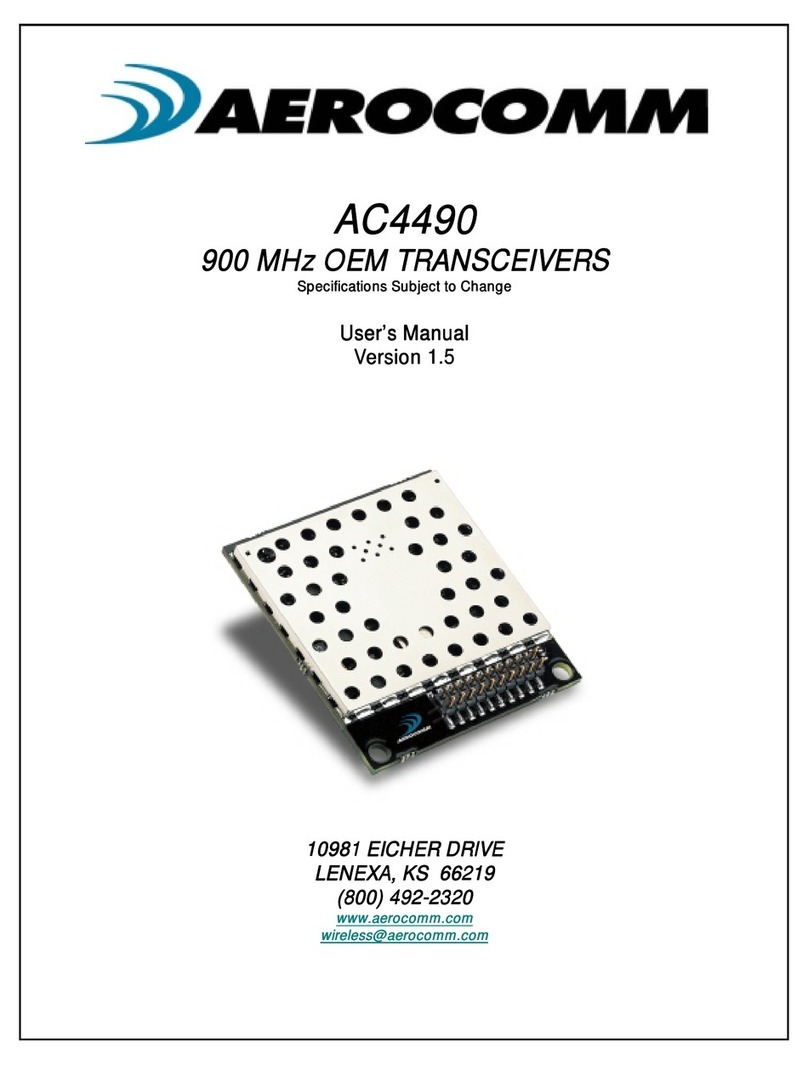
AeroComm
AeroComm AC4490 User manual

AeroComm
AeroComm AC4490 User manual
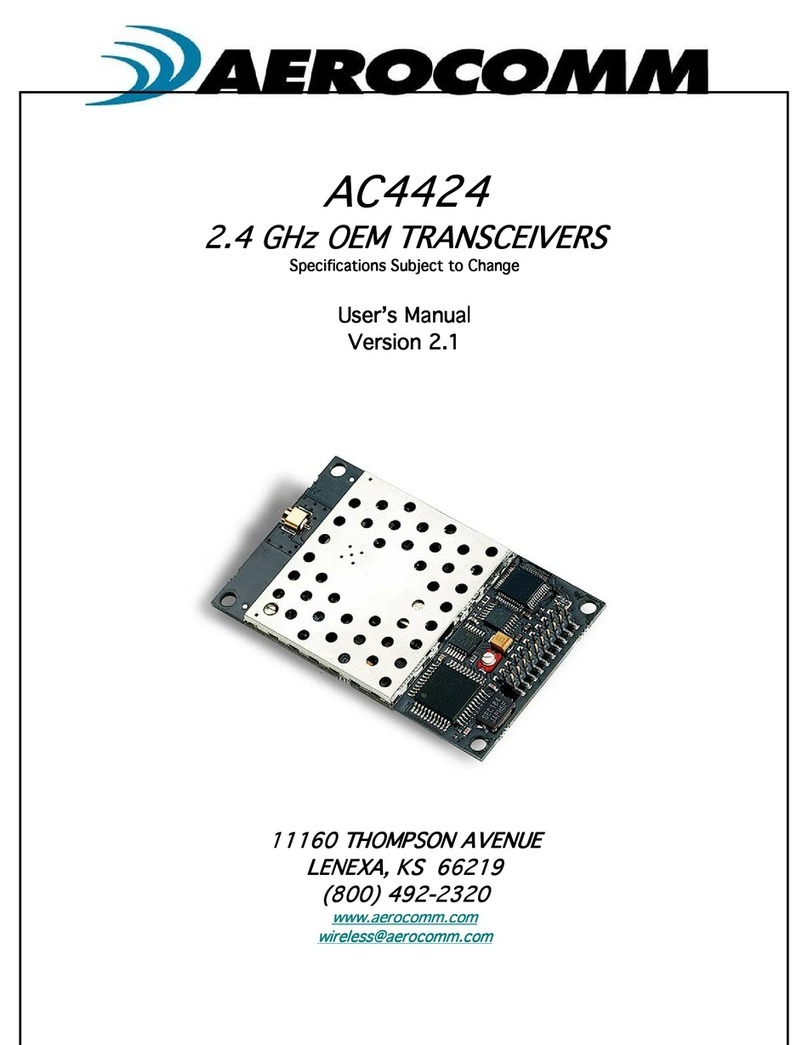
AeroComm
AeroComm AC4424 User manual
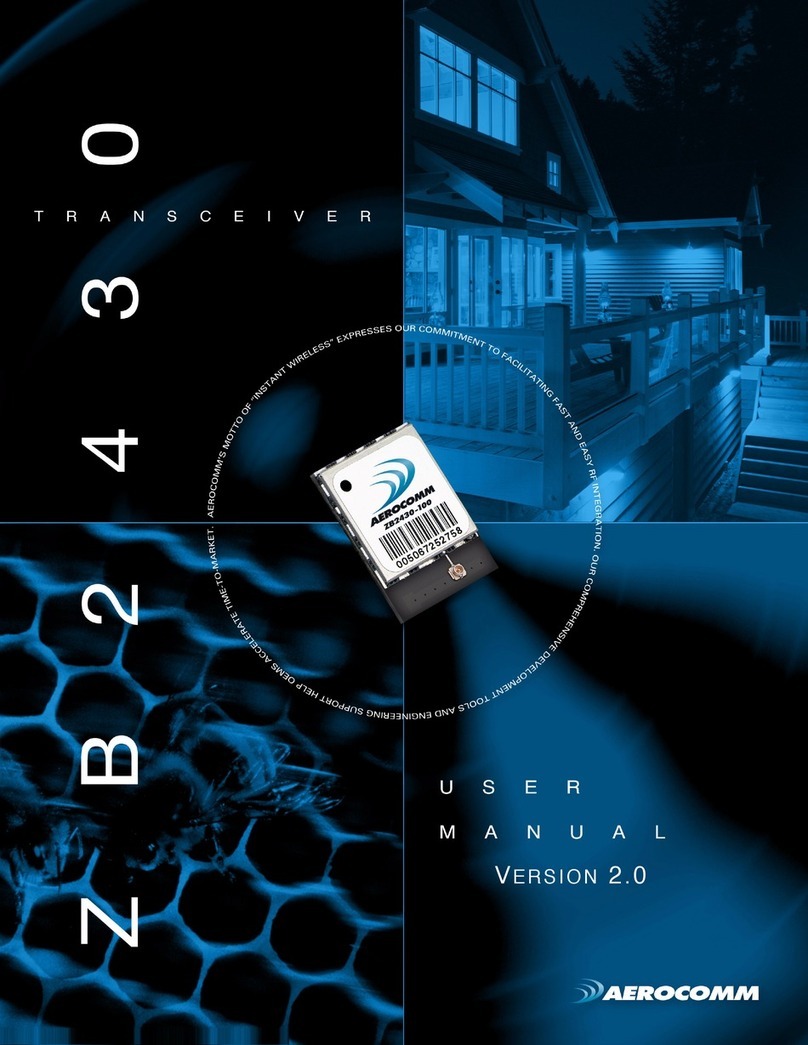
AeroComm
AeroComm TRANSCEIVER ZB2430 User manual
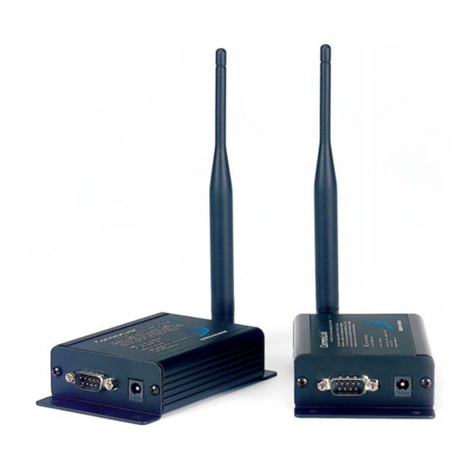
AeroComm
AeroComm CL4490-1000-485 User manual

AeroComm
AeroComm CL4490PRO User manual

AeroComm
AeroComm AC4490 User manual

AeroComm
AeroComm AC4790 User manual
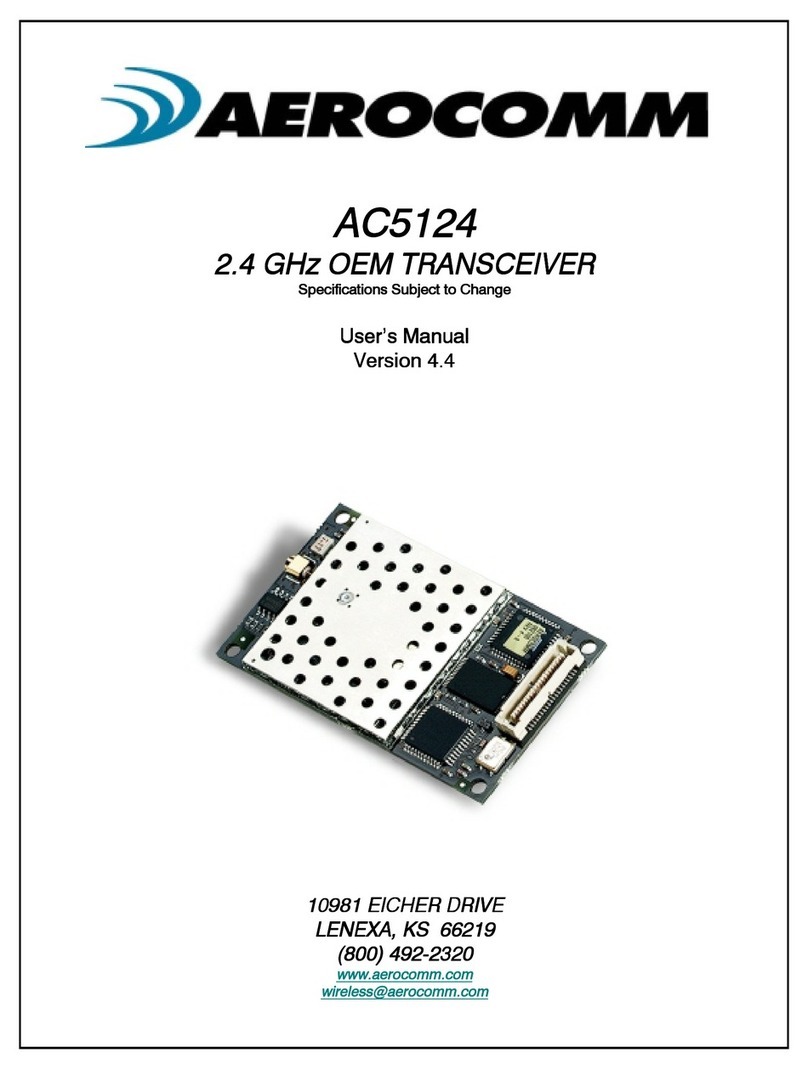
AeroComm
AeroComm AC5124 User manual
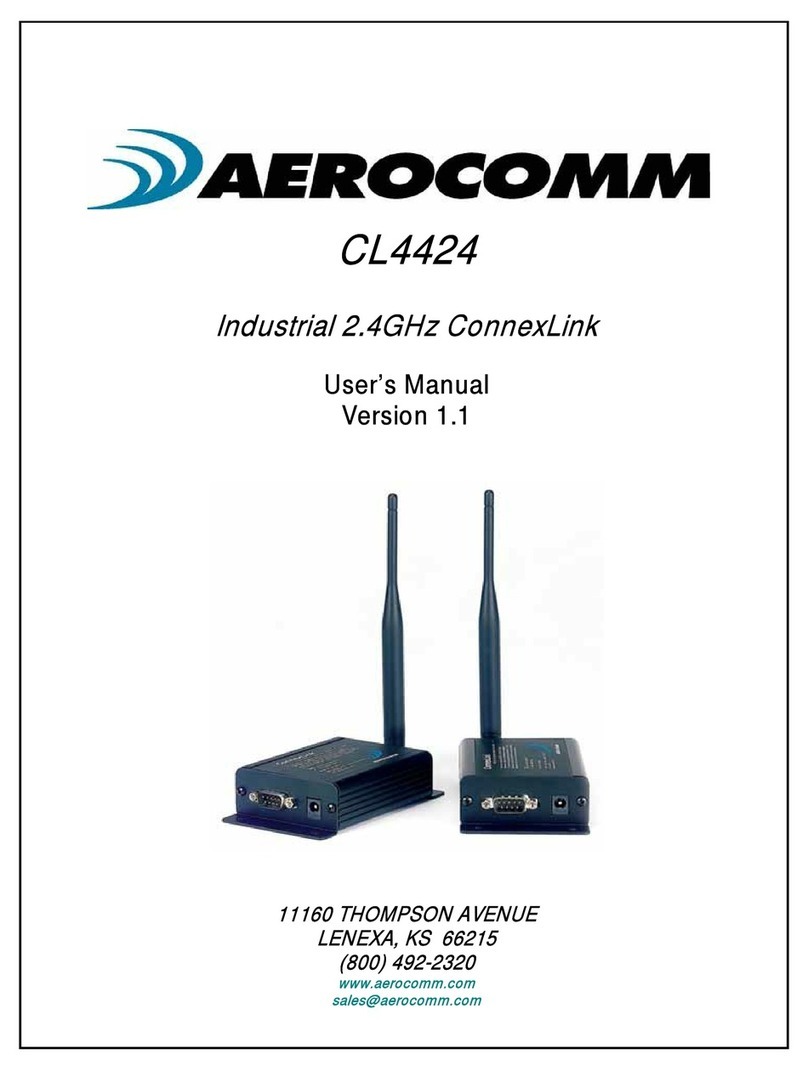
AeroComm
AeroComm CL4424 User manual
